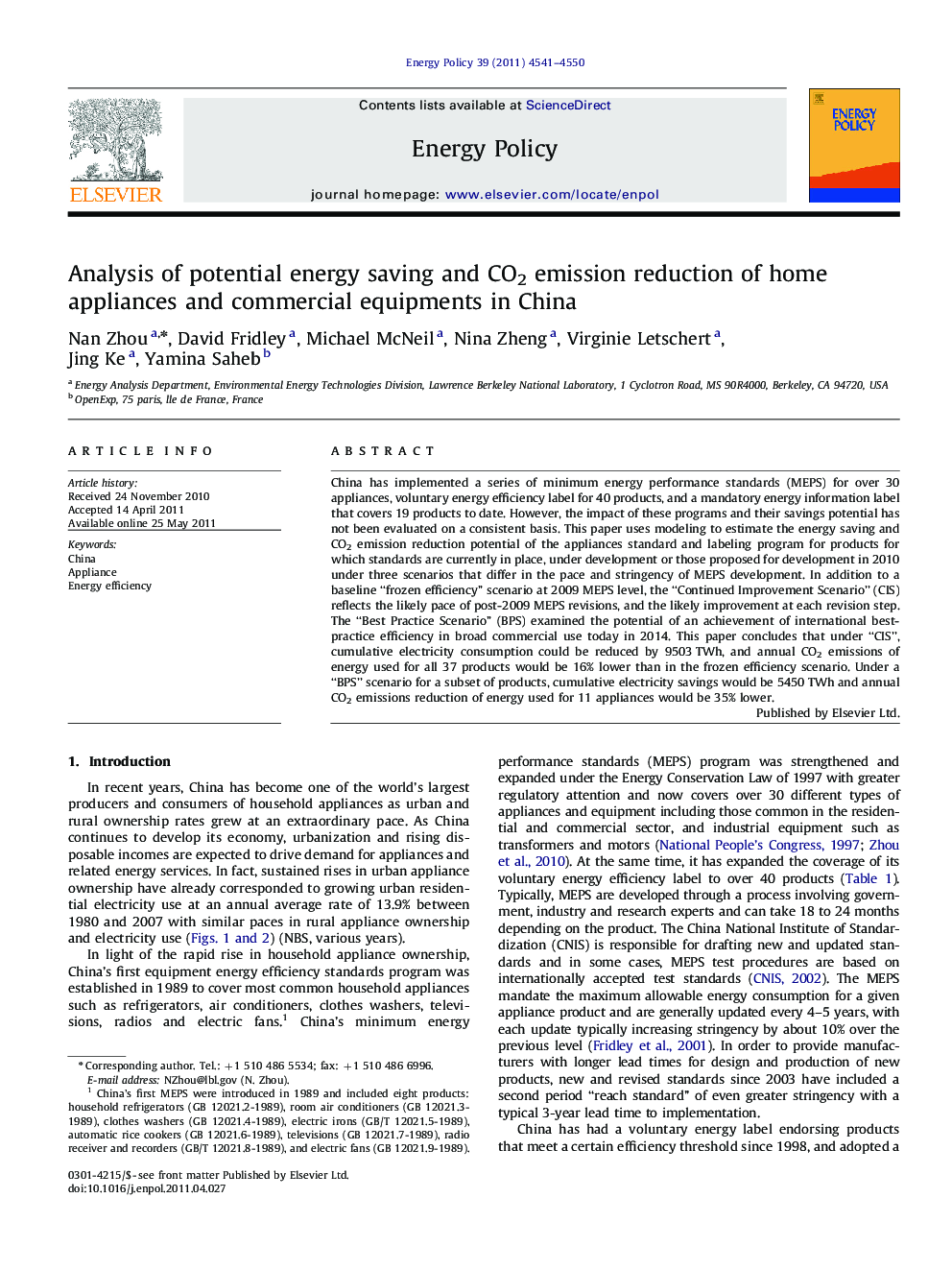| کد مقاله | کد نشریه | سال انتشار | مقاله انگلیسی | نسخه تمام متن |
|---|---|---|---|---|
| 995826 | 936275 | 2011 | 10 صفحه PDF | دانلود رایگان |

China has implemented a series of minimum energy performance standards (MEPS) for over 30 appliances, voluntary energy efficiency label for 40 products, and a mandatory energy information label that covers 19 products to date. However, the impact of these programs and their savings potential has not been evaluated on a consistent basis. This paper uses modeling to estimate the energy saving and CO2 emission reduction potential of the appliances standard and labeling program for products for which standards are currently in place, under development or those proposed for development in 2010 under three scenarios that differ in the pace and stringency of MEPS development. In addition to a baseline “frozen efficiency” scenario at 2009 MEPS level, the “Continued Improvement Scenario” (CIS) reflects the likely pace of post-2009 MEPS revisions, and the likely improvement at each revision step. The “Best Practice Scenario” (BPS) examined the potential of an achievement of international best-practice efficiency in broad commercial use today in 2014. This paper concludes that under “CIS”, cumulative electricity consumption could be reduced by 9503 TWh, and annual CO2 emissions of energy used for all 37 products would be 16% lower than in the frozen efficiency scenario. Under a “BPS” scenario for a subset of products, cumulative electricity savings would be 5450 TWh and annual CO2 emissions reduction of energy used for 11 appliances would be 35% lower.
► Strengthened efficiency standards decelerate electricity demand growth but total demand rises through 2030.
► Continuous improvement of current standards can achieve cumulative reduction of 9503 TWh by 2030.
► International best-practice efficiency for selected products reduces 5450 TWh cumulatively by 2030.
► Regularly updated standards can achieve most of energy savings as best practice by 2014.
Journal: Energy Policy - Volume 39, Issue 8, August 2011, Pages 4541–4550